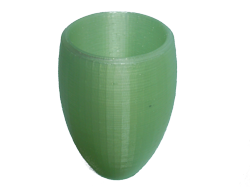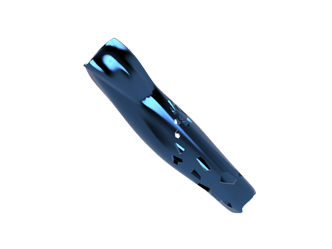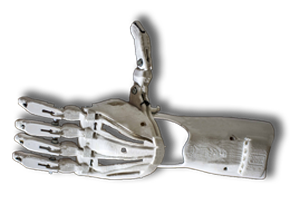On this page we would like to take a closer look at two success stories. IBM and Northrop Grumman both are appropriate examples that may illustrate the opportunities of Second Life Enterprise (SLE) and demonstrate concrete solutions about corporate communications like joint simulating and product development.
Currently, 14 big players all over the world are using SLE, including IBM, Naval Undersea Warfare Center (NUWC), New Media Consortium (NMC), Case Western Reserve, Intel and Northrop Grumman.
Here you can find a selected list of more companies working successfully with SLE or within Second Life.
Case study 1: IBM – Virtual conferences
The Academy of Technology (AoT) from IBM is a pioneer in advanced technology studies and technology research. AoT members advise IBM in terms of technology, identify and monitor technical developments and opportunities, improve IBM’s technology base and develop IBM’s technical community.
In autumn 2008, the Academy organized a Virtual World Conference and also thier annual meeting. Both were held in a secured environment in Second Life, where the venue was specifically designed for IBM-events like rooms for keynote and breakout sessions, a simulated Green Data Center, a library and various other places for meetings. A basic Second Life training was offered for the over 200 participants while preparing the conference, so that they were able to get along comfortably in the virtual world.
Craig Becker, Global Architect for IBM’s Digital Convergence EBO (Emerging Business Opportunity) and an experienced resident of Second Life, offered to help the core team as Chief Architect and Design Leader. Becker worked together with Linden Lab for several months and formed behind the firewall 16 regions in Second Life and created a safe environment for the conference participants. He ensured access to the IBM region and also to the other islands in the public environment within Second Life.
When the big day finally arrived—October 21st 2008—the center was complete, volunteers were in place, and presenters and participants were ready. The three-day Academy of Technology’s Virtual World Conference attracted over 200 members globally who attended 3 keynotes and 37 breakout sessions. Sessions were chosen from over 65 submissions by a panel of Academy members, led by Boas Betzler, virtual world architect, IBM STSM and member of the IBM Academy of Technology. The organizers and volunteers unanimously agreed that the Virtual World Conference was a complete success and far exceeded their expectations. Attendees raved about the conference and thoroughly enjoyed the experience.
With an initial investment of roughly $80,000, IBM estimates that they saved over $250,000 in travel and venue costs and more than $150,000 in additional productivity gains, since participants were already at their computers and could dive back into work immediately, for a total of $320,000 saved (when compared to the potential expense if the event had been held in the physical world).
The complete case study of IBM can be reached via the following link.
Case study 2: Northrop Grumman – Product Design & Prototyping
Northrop Grumman Corporation is one of the world’s most reputable and influential providers of innovative systems, products, and solutions (in the aerospace, electronics, information systems, shipbuilding and technical services industries) to governments and commercial enterprises worldwide, NGC’s top priority is meeting the highest global standards in technology and innovation.
Second Life is a powerful training platform because it enables global teams to quickly and inexpensively create virtual prototypes of complex and expensive equipment and working environments. Employees can learn new skills and procedures in-context and in real time with their colleagues, rather than reading manuals or viewing slideshows. Second Life brings participants together to interact in one time and place, and allows others to join in, all without leaving their desks.
Matt Furman is a NGC Developer, the Second Life project lead, and a key member of the Netcentric International Operations Division (NIOD) who has long been fascinated by the collaboration,training, and communications challenges the corporation faces working amidst a sea of classified information. Since 2004, NIOD has been exploring cutting edge and emerging technologies to solve these challenges in innovative ways. They investigated everything from Computer Aided Design (CAD) applications to Massively Multiplayer Online Games (MMOGs) before discovering virtual worlds and Second Life in 2005. “There aren’t any [virtual worlds] that I’d consider in the ballpark of Second Life…” said Furman.
The Cutlass Robot is an armored allweather six-wheel vehicle equipped with a complete 360° pivot manipulator arm with a state of the art gripper. It’s a very impressive machine, costing NGC thousands of dollars to transport to training locations and even more to conduct physical training exercises. Very few of them exist in the real world. A replica of the Cutlass Robot was built in Second Life—where there was no risk of damage, trainee safety hazards, or accessibility constraints. When the Cutlass Robot project manager saw the Second Life version, he felt the fidelity of the design was so good that people should train on the virtual version before ever touching the physical machine claiming, “It works just like the real one!”
(Editor’s note: The piloting was so realistic that the Second Life experience influenced the parallel development of the real remote control of the robot. The virtual replica remote control was developed using virtual interactive prototyping in real time to develop the usability of the mature product.)
Prior to the development of their Second Life environment in 2008, NGC employees often approached similar problems as colleagues in other departments or locations, but lacked a means to easily interact with one another. Now NGC’s space in Second Life is a secure way for employees to share their work without needing to travel or meet face-to-face.
The complete case study of Northrop Grumman can be reached via the following link.
These case studies rely on information of Linden Research, Inc. All information is without guarantee.
Currently, 14 big players all over the world are using SLE, including IBM, Naval Undersea Warfare Center (NUWC), New Media Consortium (NMC), Case Western Reserve, Intel and Northrop Grumman.






Kommentare sind geschlossen.